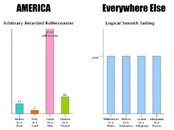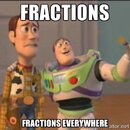In the UK, we are a bit funny with our units. I'm 35 and have always been taught in metric units, so you'd expect the older folks to have got used to them. Food has always been weighed out in pounds, but in recent years, this has been outlawed. Food has to now be sold in metric units and there was outrage when it happened as none of the coffin dodgers had a clue what a kilogram was. It is still permitted to advertise a price in imperial units, but it must be secondary to the metric price. Despite this, you can still buy a quarter pounder from McDonalds, a 12" Italian BMT from Subway and pizzas are advertised by diameter in inches.
Clothes are still sized in inches and we tend to refer to somebody's height and weight in feet and inches, and stones and pounds. We also tend to use miles for long distances and speed limits are still in miles per hour.
At work, I have always worked in metric. Like most I can work in both, but I prefer metric. Most of the older boys can do the same but often default to imperial units. Some just stubbornly refuse to work in metric though. Recently I was buying some plasterboard. Building materials such as this traditionally come in 8' X 4' sheets, but with metrication, things tend to be sold by the nearest round number in metric, so the stuff I wanted is now sold as 2400mm X 1200mm, which is slightly smaller. I went to a local builders' merchant and asked for 2400mm by 1200mm sheets and he looked at me like I was talking foreign - "The ones we sell are eight by four...". I said that would be fine and they delivered them the next day. I noticed the sheets are all stamped 2400mm X 1200mm. I enquired at the same place about prices for skirting board and it was £1.32+VAT per metre!
Money is an odd one. Before decimalisation (43 years ago), there was 240 pence to the pound. Multiples of pence were referred to by all sorts of names, such as florins, crowns, half crowns, shillings sixpence, thrupenny, ha'penny etc. When decimalisation came in, there were now 100 pence to the pound. With the exception of those who live in parts of Norfolk, most of us have ten fingers, so a base 10 system should be a piece of piss, but many still struggled and some still do.
The shilling was 12 pence, so there used to be twnty to the pound. The new five pence piece was a similar size and weight, and there are also twenty to the pound, so this became known as the shilling, or 'bob' by its slang term. If something is £4.60, my dad will say 'four pound and twelve bob', whereas I would say 'four pound sixty'. Why people insist on working out how many times five goes into the number after the decimal is beyond me.
With diving though, I have always used bar, kilograms , litres and metres. A cylinder is always measured by its volume at atmospheric pressure. The reasons why this is the best system have been explained several times.
I have never met a diver who uses psi, cubic feet and feet - even the older ones. One thing that bugs me is there are loads who still work out their weight requirement in pounds. Most of the instructors I know do it and even people my age and younger. A slightly hilarious (but at the same time dangerous) incident occurred on our annual club trip to Malta. It was my turn to organise it, so I arranged the diving with a dive centre we have used for the past four years. A lot of the diving in Malta can be done from the shore as it gets deep very quickly, but a few sites can only be reached by boat. There were two boat dives we wanted that were both around 40m, so we decided to do them over two days so we didn't get stung by deco doing them on the same day.
Usually we do the first dive at Cirkewwa. There are two artifical reefs with a sea bed of 34m. The entry point is a shallow rock pool that then opens up into the sea. It is an ideal first dive as it is great for doing a weight check. The owner of the dive centre emailed me to say the only days the boat was available was days one and two. I looked at the list and there was nobody who this should have been a problem for. All were experienced cold and warm water divers and all had either a tech or professional qualification. I did however send out an email to the group to tell them the first dive would be straight off a boat and down a shot-line to 35-40m, and they should either think what weight they last used in their wetsuits, or come for a bracing dip in Wales before travelling.
On the first day, one of the group (PADI instructor) asked me on the boat what site we were doing. "The Imperial Eagle." I replied. "Off the boat and there's a permanent shot. Down the shot to the statue of Christ at 30m and then swim around the corner of the rock to the wreck.". He then told me he hadn't been in open water for nearly a year, but I pointed out I did send an email warning people there would be no check dive. He kitted up though and just got on with it.
His buddy was a regular to Malta. He was a BSAC Dive Leader and also had his advanced nitrox and extended range, so roughly similar to a PADI DM with a Tec 50 cert. The two of them jumped in first, and I was one of the last in. As I swam for the shot, the two of them were swimming back, with the second diver looking distressed and the first towing him. I watched them onto the boat and waited for an 'okay' signal. On the signal, my buddy and I descended.
I spotted the two divers had made it back into the water as they were on the wreck. Big 'okay' signal and both looking happy. Back on the boat, I went to see they were okay:
"Yeah, I'm fine. It was these weights", he said?
"Yeah?", I replied.
"Yeah! I need sixteen pounds and they had two 'stamped' on them, so I took eight."
What I wanted to say would probably upset the ScubaBoard swear-filter so much it would alert the pope if I typed it. Because I'm nice, I just said, "They're two kilo, not two pounds.".
"Yeah! I know that now..."



